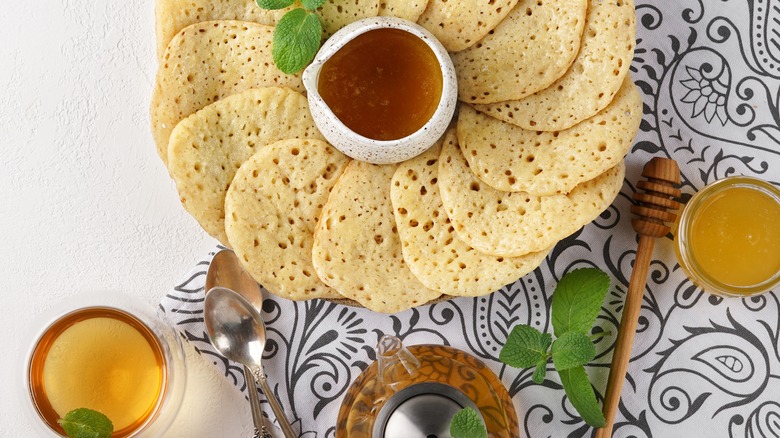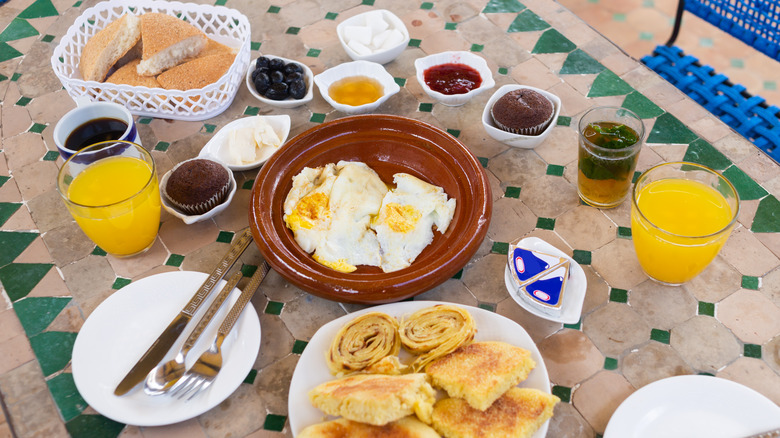What Does A Traditional Breakfast In Morocco Look Like?
If you're traveling to Morocco to explore the souks of Marrakech or the beach city of Agadir, there's a good chance you'll encounter a morning meal that looks a bit different to what you'd encounter in the U.S. Cereal and toast are not so much of a thing, and you certainly won't be chowing down on donuts to start your day. For cultural reasons, you're highly unlikely to encounter bacon (it's not halal), although eggs are sometimes still on the menu.
Let's start with the beverages: If you fancy juice with your breakfast, you're in luck, as orange juice is particularly popular in Morocco: The country is a big orange producer and you'll often see it fresh-squeezed. It's not hard to find other juices at market stands, with options like pomegranate or watermelon. As for hot drinks, mint tea is a serious staple: It's a sweeter tea made with mint leaves and green tea. Those who need a bigger caffeine hit will be fine, as coffee is also a common way to start the day.
As for the food, a lot of Moroccan breakfast options aren't too far removed from what you'd get in Western countries. Firstly, bread is a big deal in Morocco: You'll likely encounter khobz, a semi-flat bread, but thanks to the country's French influence, baguettes aren't uncommon either. What to do with that bread is flexible: It can be dipped in olive oil (another big Moroccan staple), or topped with jben, a soft goat-milk cheese, honey, or olives. Jams and butter sometimes pop up, too.
Some more unique Moroccan breakfast foods
Beyond bread and spreads, pancakes are a big deal in Morocco, but don't expect a diner-style short stack. There's a few types of pancake you'll see on a Moroccan breakfast table. First is baghrir, a thin semolina pancake that's only cooked on one side, leaving it pockmarked with lots of holes on the other side thanks to the yeast in the recipe. These are usually served with butter and honey.
There's also msemen (it may be called by other names like rghaif, depending on small differences in the recipe). These pancakes are square shaped and have a flaky texture a little like roti. To make them, a slightly oily wheat flour dough is rolled super flat and folded over to create that layered texture; they're also served with butter and honey. Finally, there's harcha: a more bready pancake that looks a little like an English muffin with its disc shape. It's made with semolina and yeast, and also served with butter and honey, or sometimes cheese.
Eggs are sometimes part of Moroccan breakfast, too: They're often fried in olive oil and seasoned with cumin and sometimes a little paprika. You can serve them with a bread like khobz to soak up the yolk and olives; in some parts of the country it may be served with khlie, salted beef or lamb that's preserved in oil.

